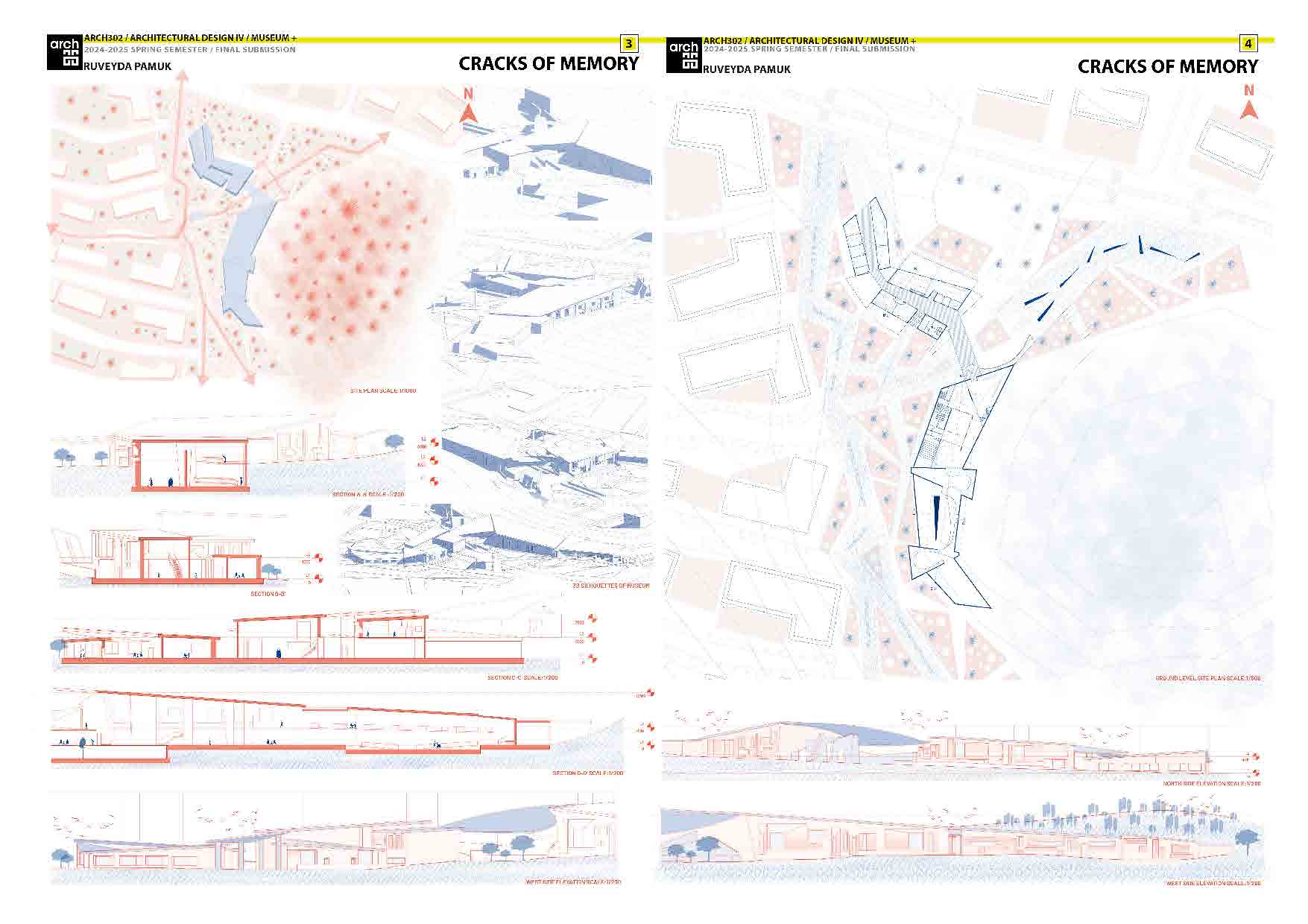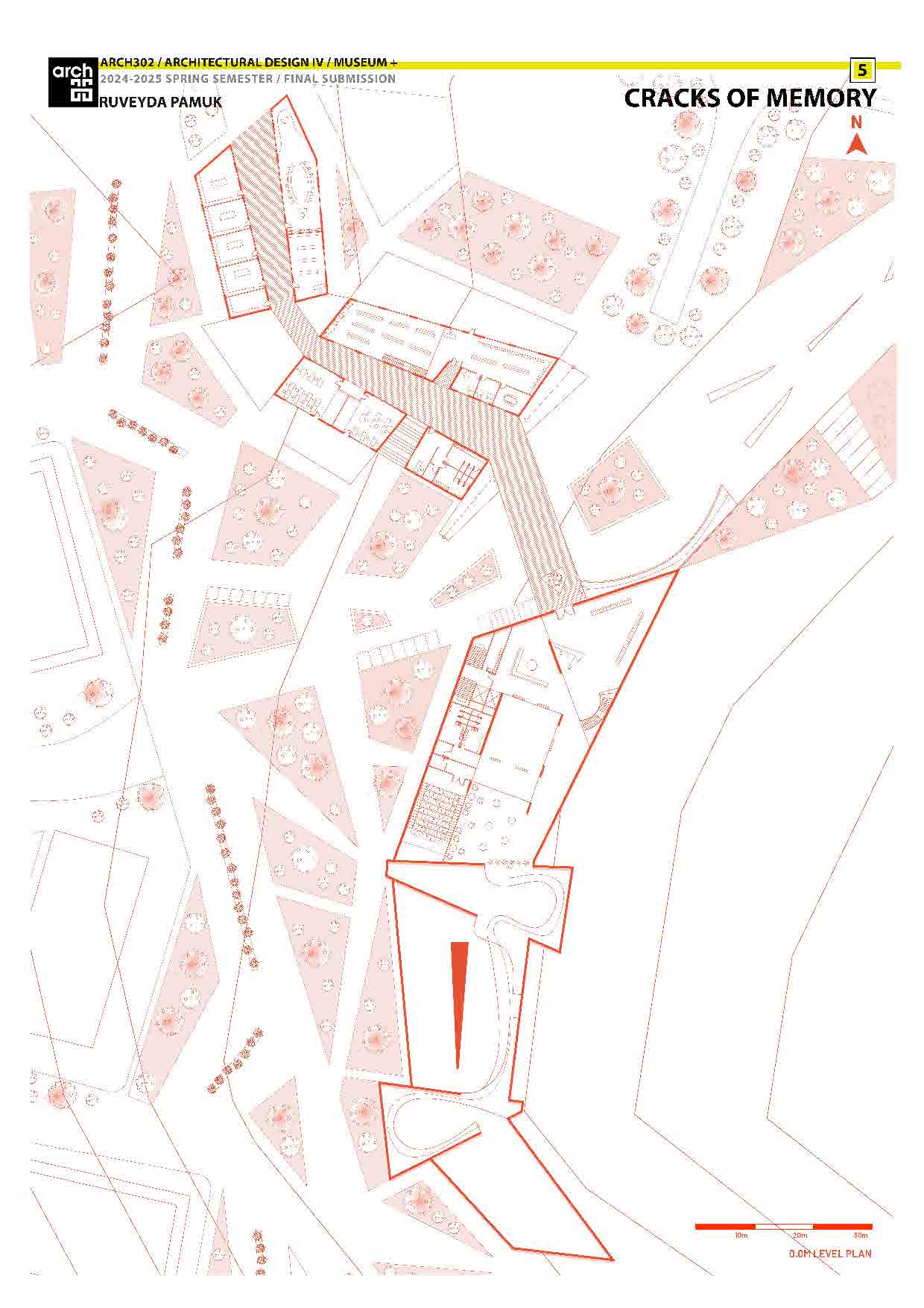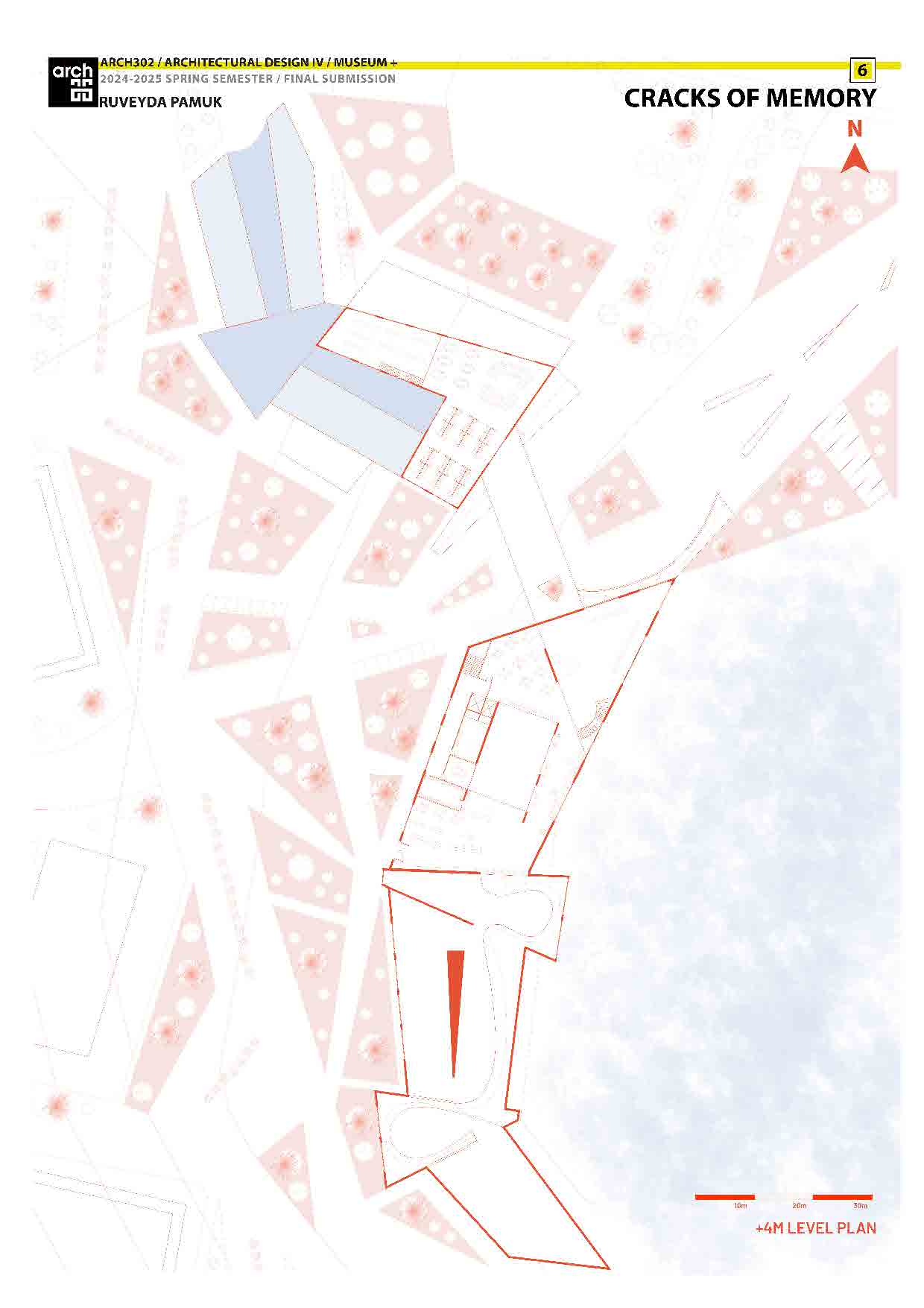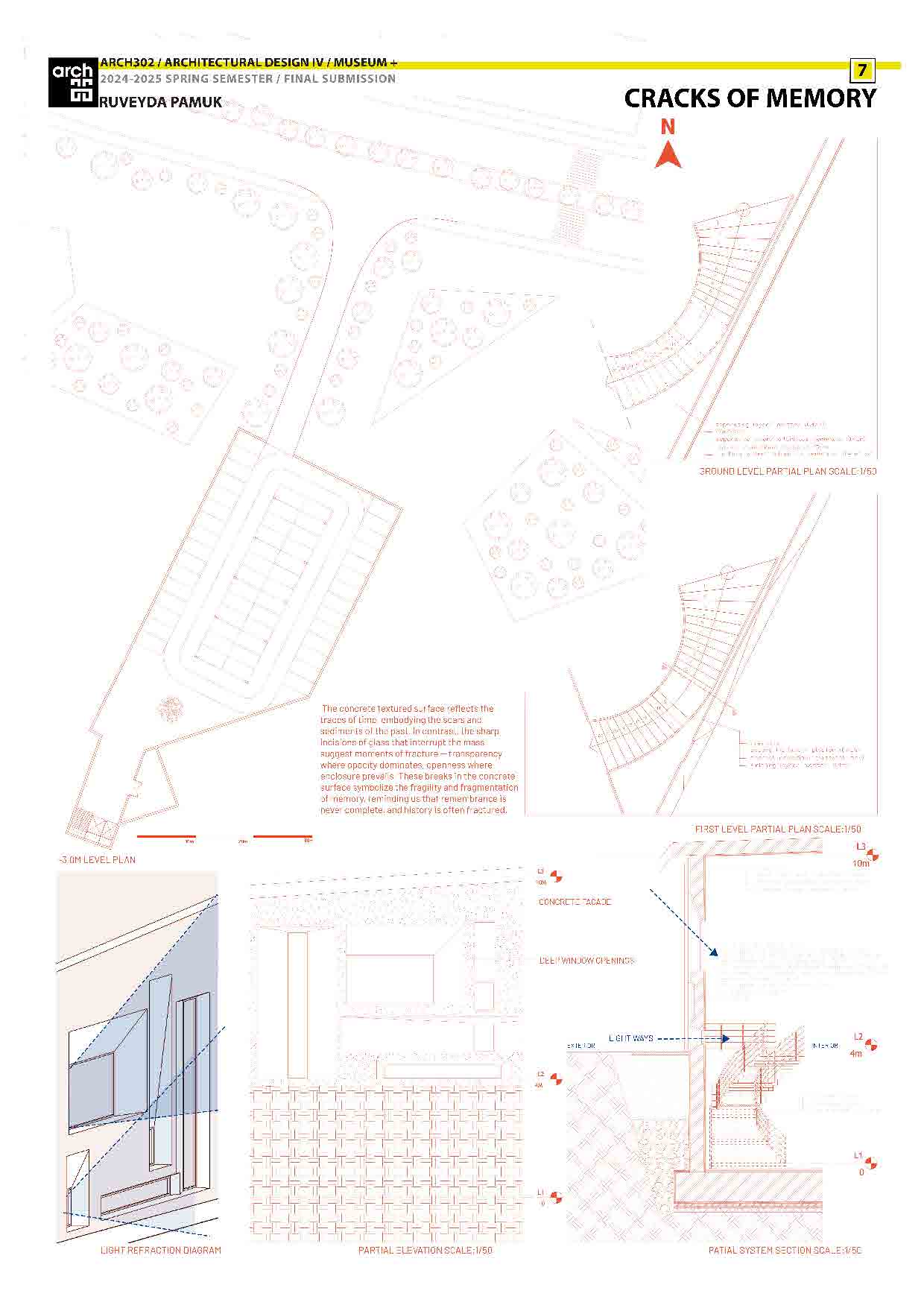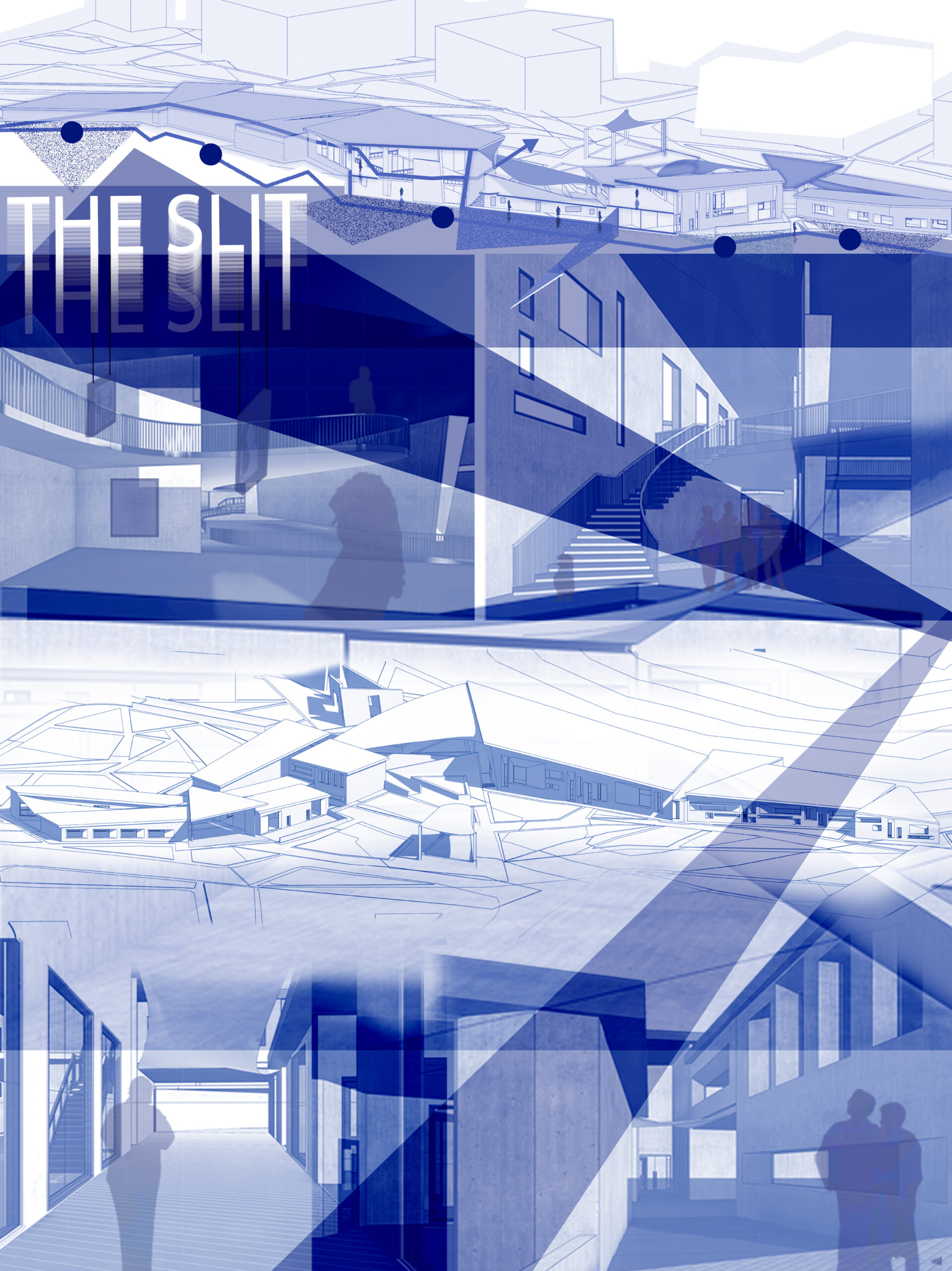CRACKS OF MEMORY / Rüveyda Pamuk
This museum is envisioned as a spatial archive that intricately weaves the themes of memory, forgetting, fracture, and recall into the emotional and cultural fabric of Kahramanmaraş. Situated at the heart of a reimagined neighborhood shaped by pedestrian axes aligned with the natural slope, the museum acts as both a symbolic anchor and a dynamic cultural core. Its architectural language draws from notions of cracks, ruptures, and layered remembrance mirroring the fragmented and nonlinear nature of memory itself. Through spatial gestures such as voids, transitions, and thresholds, the design allows visitors to navigate moments of introspection, absence, and re-emergence, cultivating a sense of both loss and rediscovery. Rather than standing in isolation, the museum is embedded within a diverse urban context composed of four primary typologies that structure both movement and community life. Preserved historical residential typologies maintain a tactile connection to the city’s heritage, grounding the site in authenticity and continuity. Courtyard-based social housing blocks foster collective living and community interaction through shared semi-public spaces. Public-use blocks activate the neighborhood with cultural functions such as workshops, cafés, and gathering areas, ensuring permeability between everyday life and the museum’s more contemplative spaces. Meanwhile, linear residential blocks follow the walking paths, reinforcing circulation while acting as mediators between public and private realms. Together, these components form a layered and responsive urban landscape, in which the museum becomes not only a place for exhibition, but a lived and remembered space at the heart of the community.
